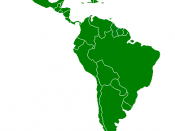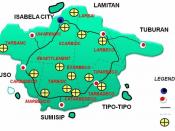Agrarian Reform that Works
Since it's Proclamation of Independence in 1822, Brazil has had a wide and vast spectrum of conflicts that plague the developing country, even to this day. Between resource management, political regimes, and a nearly out-of-control number of lower class, Brazil is looking to the future to emerge as a nation comparable to the economic giants of today. Before tackling global issues, however, Brazil must first deal with internal affairs that threaten to tear the fledging nation apart. One of Brazil's most pressing political and economic issues of today is the problem of agrarian reform. While the Brazilian government seems to be sitting back and turning a rather apathetic eye to the issue, there is one group out there getting Brazil's food production means up and running again. Despite the fact that the Sem Terra Movement (MST) appears to be working towards the betterment of Brazil, the government continually attempts to stomp their efforts.
In current day Brazil, land management should be a mute point in the country that takes up just under half the total landmass of South America. The current system under fire can be traced back to the late 1950s and the early 60s when America was in fear of escalation of the Cuban Revolution. The US decided to combat Communistic tendencies in Latin America with a policy known as the "Alliance of Progress" (Graziano). The Alliance aimed to establish a prosperous rural middle class by stimulating reform in the agricultural programs of Latin American nations. The policy would thus create an unfavorable environment for Communism as consumers and businessmen, alike, sought ways to get rich quick. The next step was to establish reform programs that worked, which is where Law 4504/64 ("The Land Statue") comes into play. The Land Statue intended to provide...


